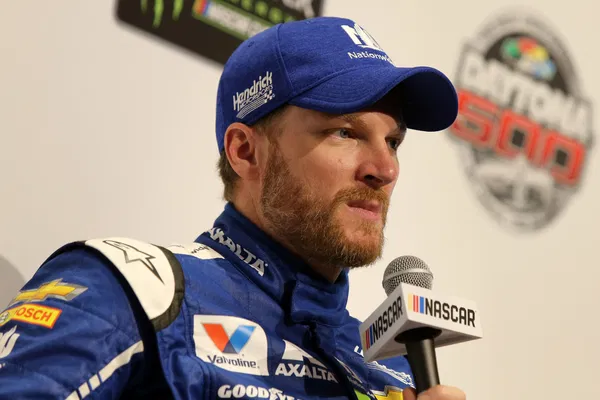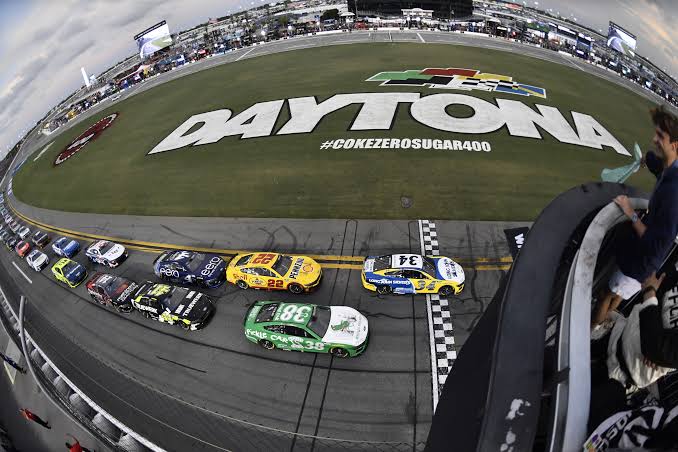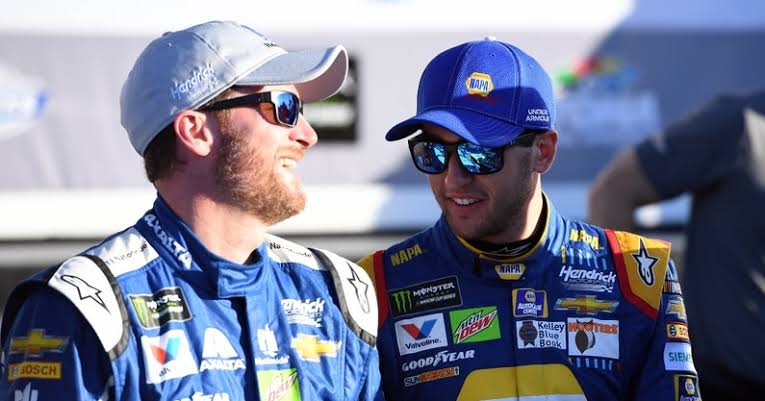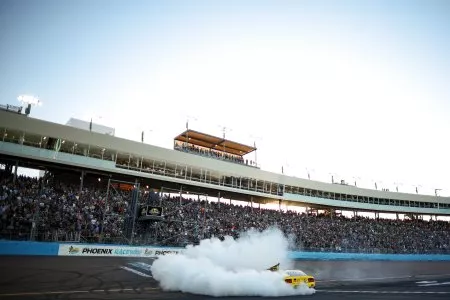The recent Cup Series race at Bristol Motor Speedway was highly anticipated, with fans expecting an edge-of-your-seat thriller. After all, it was Bristol, a track known for its exciting, action-packed races, and this particular event was an elimination race, making the stakes even higher. Adding to the drama were memories of the spring race, where teams struggled with rapid tire wear, leading NASCAR officials to scramble and provide extra tires during the event. Denny Hamlin triumphed in that race, thanks to his expert tire management, further raising expectations for the recent race.
However, things didn’t quite play out as expected this time around. Tire wear, a major factor in the spring race, was not a significant issue. As a result, Kyle Larson dominated the event, leading an astounding 462 out of 500 laps without much competition, sailing smoothly to victory. This left fans and analysts underwhelmed, with many pointing fingers at Goodyear, NASCAR’s tire supplier, for not delivering the challenge they had anticipated. Yet, Dale Earnhardt Jr. doesn’t think Goodyear is to blame this time—instead, he argues it’s the car’s fault.
The previous Bristol race was marked by 54 lead changes, making it an exciting spectacle. In contrast, this latest race saw only eight lead changes, in part because overtaking was extremely difficult. For instance, Martin Truex Jr., whose playoff hopes were dashed, found himself stuck in 24th position after a pit-lane speeding penalty, despite running in the top five for most of the day. Once he fell behind, he couldn’t make up the positions needed to stay in the playoffs, highlighting how tough it was to make progress on the track.
While some have blamed the tires for the less-than-thrilling race, Dale Earnhardt Jr. believes the next-gen car is the real issue. Speaking on his podcast, the *Dale Jr. Download*, he shared his thoughts on the car being unsuitable for Bristol’s short track. He explained, “We bounce back and forth between blaming the tire and the car. Denny [Hamlin] made the case this week that it’s the car, and I agree. That race car is a sports car, designed for ovals, and it just doesn’t suit short tracks like Bristol.”
According to Earnhardt Jr., the next-gen car simply isn’t built for short tracks. Making it compatible with Bristol’s layout would require significant and perhaps unrealistic modifications, such as narrower tires, less rubber on the track, and the removal of the car’s underbody features. However, he admitted that such changes might be impractical, given how much has already been invested in the current design.
Denny Hamlin, a driver and team owner, echoed Earnhardt Jr.’s sentiments. On his *Actions Detrimental* podcast, Hamlin pointed out that the car’s issues are often brushed aside because many people are quick to blame the tires instead. “It’s a car problem,” Hamlin argued, “but we’re trying to fix it with tires because that’s the most economical solution.”
Hamlin, who co-owns the 23XI Racing team, knows firsthand how expensive it would be to overhaul the next-gen car. As a team owner, he’s not eager to spend more money on new parts for the car, especially since teams are already struggling to keep up with the ongoing changes. “I’ve been saying for years that we need a next-gen 2.0, but it’s just going to be too expensive,” Hamlin lamented. He believes the car’s design was flawed from the start, and fixing it would require a complete redesign, which would be financially burdensome for teams.
While Earnhardt Jr. and Hamlin are vocal about the next-gen car’s shortcomings, not everyone in the NASCAR community shares their view. Bristol winner Kyle Larson, for example, defended Goodyear and seemed less inclined to place the blame on the car. Reflecting on his experience, Larson pointed out that passing has always been difficult at Bristol, even before the introduction of the next-gen car. However, he acknowledged that it was somewhat easier to overtake in the past, before the current car design.
Larson explained that in earlier years, cars had more disparity in performance, which allowed for closer racing in traffic. Additionally, the old tire and wheel combinations would heat up more during long runs, resulting in less grip, which in turn made passing more feasible. “I’ve raced with everything from 900 horsepower to less than 650 horsepower, with both high and low downforce, and it’s always been tough,” Larson said.
Kenny Wallace, another notable figure in the NASCAR world, disagrees with the idea that the car is the problem. He recently expressed his opinion that the race quality isn’t solely a car issue, pointing out that similar trends have occurred in past races. In the 2022 Bristol race, for instance, just three drivers led 430 laps. The same pattern repeated in 2023, with only three drivers leading 431 out of 500 laps. According to Wallace, the issue might be broader than just the next-gen car.
The debate over whether the next-gen car or Goodyear’s tires are to blame for the underwhelming race at Bristol continues to divide opinions in the NASCAR community. While Earnhardt Jr. and Hamlin are firm in their belief that the car is the root of the problem, others, like Larson and Wallace, suggest the issue might be more complex. Regardless of the cause, the Bristol race has sparked an ongoing conversation about how NASCAR can strike the right balance between creating parity and maintaining exciting race quality.
Dale Earnhardt Jr. Blasts NASCAR – Bold Warning for the Future of Short Tracks




